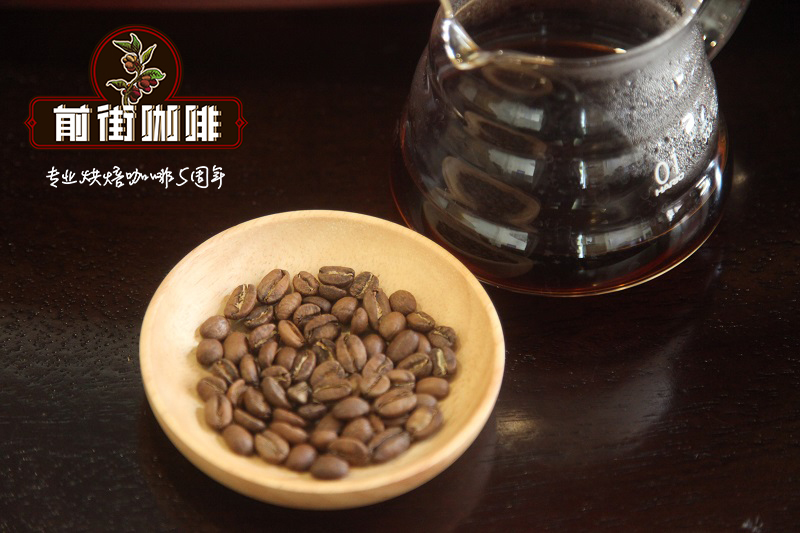Indonesian civet coffee $400 a kilo? How much does a cat shit coffee cost?

Professional coffee knowledge exchange more coffee bean information please follow the coffee workshop (Wechat official account cafe_style)
Civet coffee is made from the droppings of Indonesian coconut cats (a kind of civets), so it is called "civet coffee", also known as "Kopi Luwak" (civet coffee).
Coconut cats are distributed in southern India, Sri Lanka, Southeast Asia and southern China. It is a nuisance to the locals in Sri Lanka because they defecate in the ceiling and indoors, often making noise and disturbing people's dreams.
Indonesian coconut cats mainly feed on coffee beans. After completing fermentation in their stomach, they destroy proteins, produce short peptides and more free amino acids, reduce the bitterness of coffee, and then discharge feces as the main raw materials.
As the coffee beans cannot be digested, they will be excreted, and after washing and baking, they will become civet coffee. It's about 400 dollars a kilo.
Coconut cats are omnivores. Apart from eating seeds, they also eat insects, snakes, birds, amphibians and reptiles, so the feces emitted by really wild coconut cats will be mixed with all kinds of substances.
Local farmers in Indonesia catch coconut cats and feed them coffee beans to make civet coffee. But it is said that there is a difference between artificially cultivated and natural ones.
The production of civet coffee is very small and very expensive. And the land for sale is even less. It is rare even in Indonesia of origin. Therefore, most of the civets sold on the market are artificially raised, and their flavor is naturally different from the most primitive and natural wild civet coffee.
How on earth is the captive civet coffee made?
The main production site of civet coffee is Indonesia, but animal welfare agencies have warned that the civet, which is responsible for producing coffee beans, lives in an environment similar to that of a chicken cage in a chicken factory.
Farmers who produce civet coffee catch wild civets and put them in small cages, where even newborn families are rigidly separated, and then continue to give coffee seeds. It is said that there are at least tens of thousands of civets living in this harsh environment.
Civets are common in the area, and some have been added to the list of endangered species, depending on the species. For example, bear beaver (Arctictis binturong), but it is said that endangered bear beavers can sometimes be seen at coffee bean production sites.
However, people who get three meals by producing civets coffee beans do exist. If priority is given to animal protection, the price of coffee beans will certainly be even higher. As a result, in the end, it should still be the animals that do not speak.
In the following film, the civets move around in their cages with obvious abnormalities. If wild civets are kept in small cages, loneliness and melancholy can lead to mental disorders.
It is said that civets are generally kept for three years. During the 3-year period, he ate coffee beans, so he lacked the necessary vitamins and nutrients. After 3 years, his health deteriorated greatly.
Most Indonesian farmers sell these artificial coffee beans as natural coffee beans excreted by wild civets in the forest.
If you buy it locally in Indonesia, you can buy cheap civet coffee beans. However, in the process of circulation, prices will rise gradually.
When you look at some Asian countries from the point of view of some advanced countries, they usually feel that the place where they live is very dirty. And if you look at Japanese pets on the basis of their pets, I'm afraid not only civets, but even cats and dogs will feel sorry for them.
I think people see things differently because of differences in habits and cultures. This problem may not only be a matter of circulation, but there is no way to blame the local people simply from the standpoint of animal protection. However, a little more knowledge may be good for animals.
Important Notice :
前街咖啡 FrontStreet Coffee has moved to new addredd:
FrontStreet Coffee Address: 315,Donghua East Road,GuangZhou
Tel:020 38364473
- Prev

Bali Kopi Luwak Factory civet coffee production process the Origin of Bali Kopi Luwak
Professional coffee knowledge exchange more information about coffee beans Please follow the coffee workshop (Wechat official account cafe_style) Kopi Luwak is the most famous coffee in Bali and the most expensive coffee in the world. Probably none of the tourists to Bali will miss the Kopi Luwak Factory, because every taxi driver in Bali has to make a detour and get stuck in traffic.
- Next

The reason why Indonesian civet coffee is so popular is that. How to brew Kopi Luwak
Professional coffee knowledge exchange more coffee bean information please follow the coffee workshop (Wechat official account cafe_style) Indonesian civet coffee Kopi Luwak, Indonesia (Civet coffee) Indonesia exports a treasure, that is the world's most expensive coffee-civet coffee Kopi Luwak, only produced in Indonesia. Although Auleo is not a good coffee person.
Related
- Detailed explanation of Jadeite planting Land in Panamanian Jadeite Manor introduction to the grading system of Jadeite competitive bidding, Red bid, Green bid and Rose Summer
- Story of Coffee planting in Brenka region of Costa Rica Stonehenge Manor anaerobic heavy honey treatment of flavor mouth
- What's on the barrel of Blue Mountain Coffee beans?
- Can American coffee also pull flowers? How to use hot American style to pull out a good-looking pattern?
- Can you make a cold extract with coffee beans? What is the right proportion for cold-extracted coffee formula?
- Indonesian PWN Gold Mandrine Coffee Origin Features Flavor How to Chong? Mandolin coffee is American.
- A brief introduction to the flavor characteristics of Brazilian yellow bourbon coffee beans
- What is the effect of different water quality on the flavor of cold-extracted coffee? What kind of water is best for brewing coffee?
- Why do you think of Rose Summer whenever you mention Panamanian coffee?
- Introduction to the characteristics of authentic blue mountain coffee bean producing areas? What is the CIB Coffee Authority in Jamaica?

